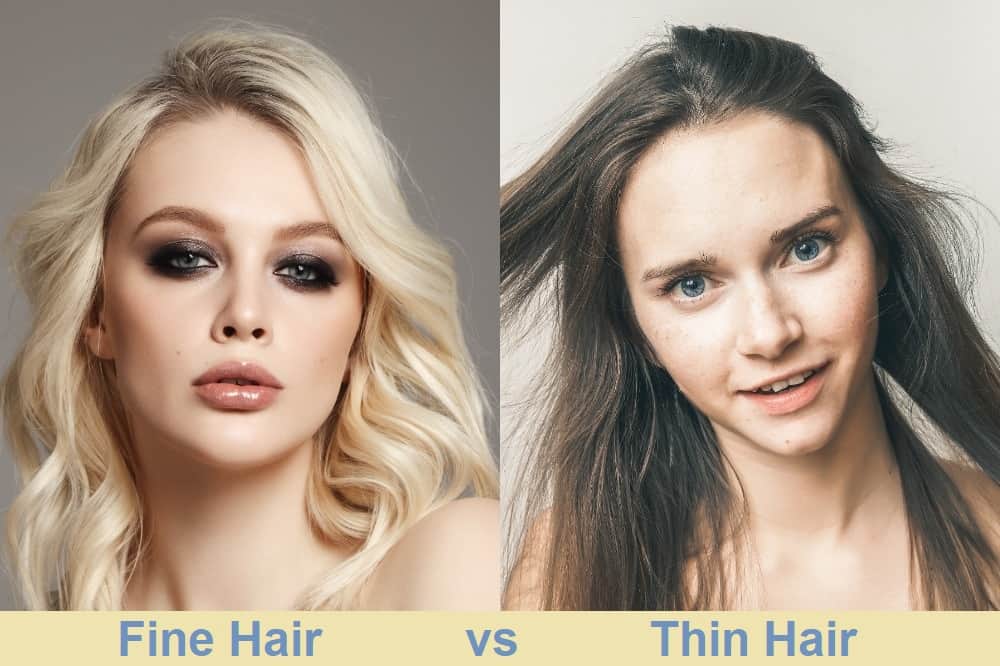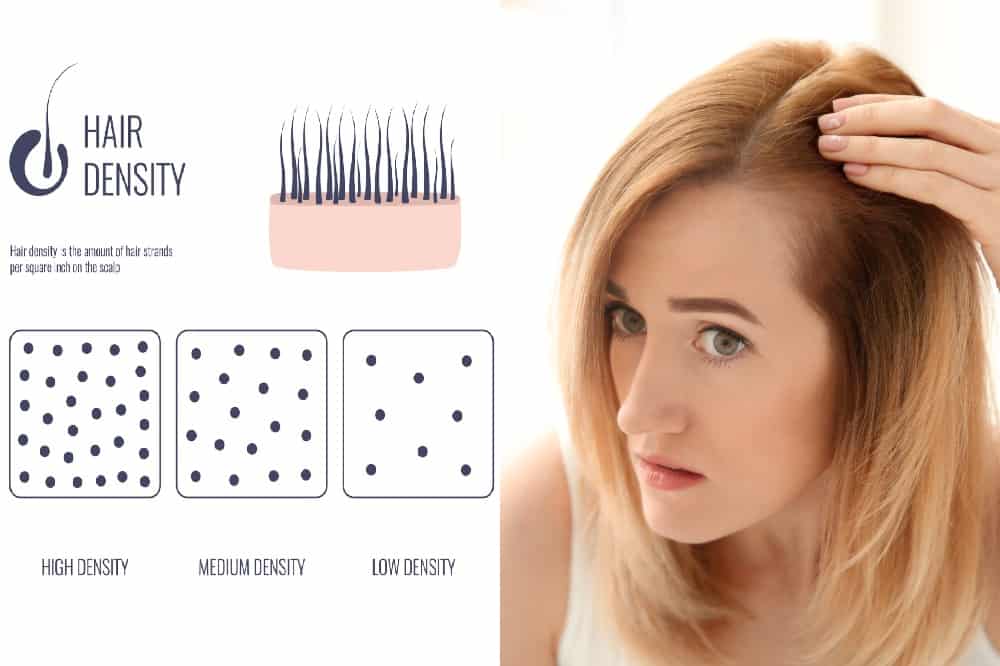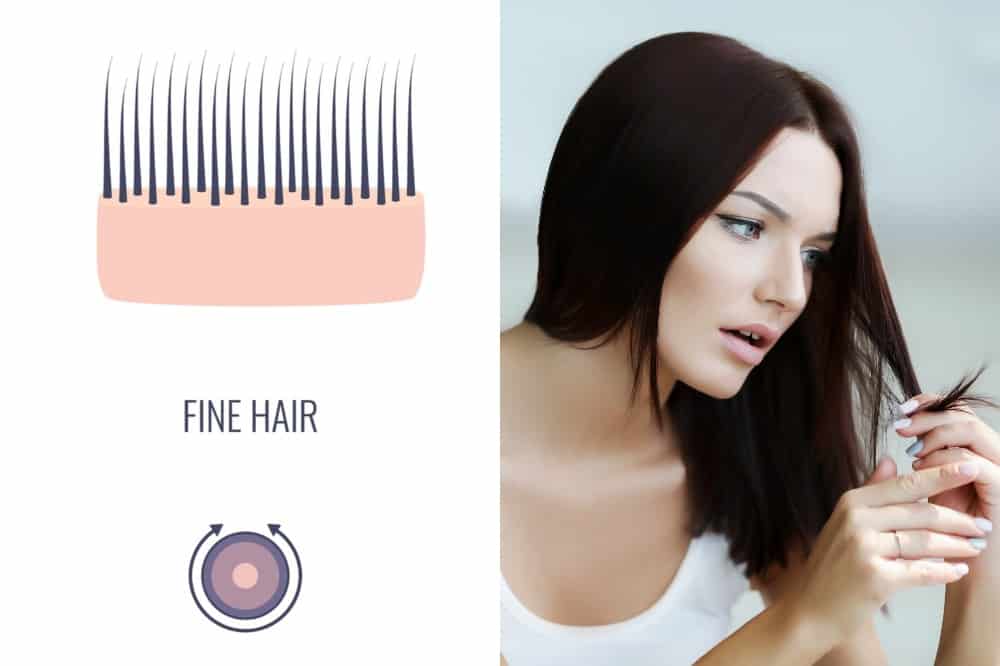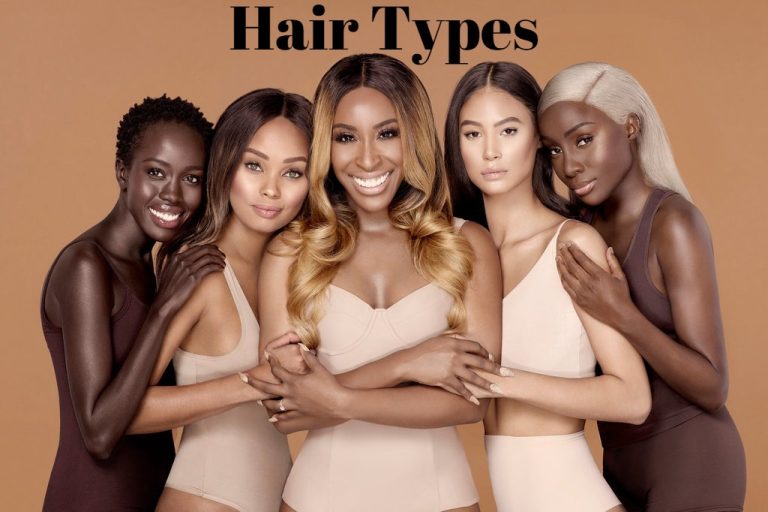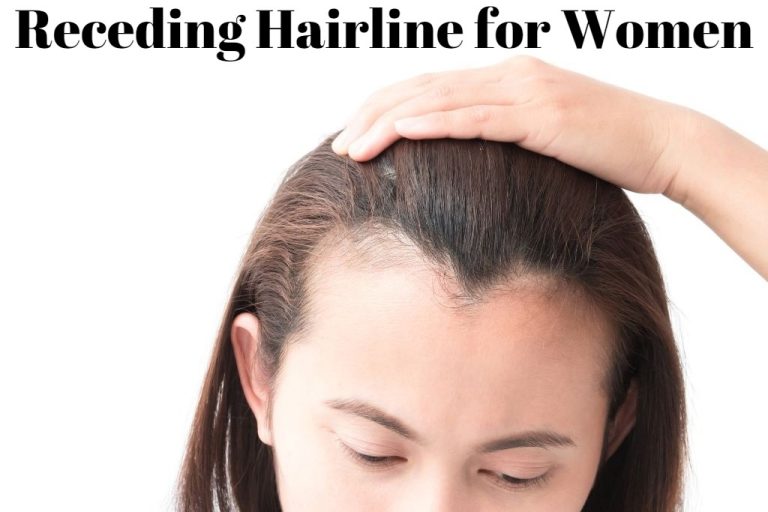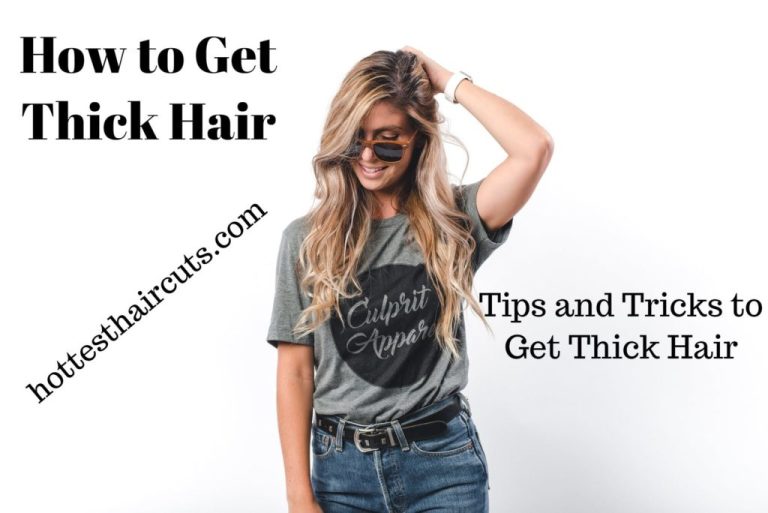Fine Hair Vs. Thin Hair: Are They The Same?
One of the most confusing concepts when it comes to identifying your hair type is the difference between fine hair and thin hair.
Nope! They’re not the same!
Although people often use them interchangeably because it’s reasonable to assume that fine hair is also thin, it’s incorrect to do so.
You may be surprised to know that some people have dense hair that’s thin, or they might have fine hair, and it’s dense.
Density and width are two terms that you should familiarize yourself with to help you better understand how to tell if your hair is fine.
What’s the Difference Between Having Thin Hair and Fine Hair?
The difference between whether your hair is thin or fine comes down to density and width.
Having thin hair refers to your hair density while having fine hair speaks to the diameter size of a hair strand.
You can describe the width and diameter of your hair by using words such as coarse or fine. The density, or how much hair you have on your head, is what makes your hair thick or thin.
Understanding Thin Hair
So having thin hair means that per square inch, you don’t have a lot of hair on your scalp. It’s possible to have thin, coarse hair, even though people usually associate coarse hair with thickness.
It’s crucial to figure out what type of hair you have to style it and maintain it correctly. When you have thin hair, you should put certain heavy styles in your hair, like braids, because it can cause your hair to thin out even more, leading to hair loss.
When you evaluate your hair, check for signs that typically indicate whether your hair is thin or thick.
For example, do you feel like your hair is heavier after you put products in it? Is it challenging to brush your hair? Or maybe you feel like you have to use globs of product to make your hair easier to manage; these are signs that you don’t have fine or thin hair.
On the other hand, if you feel like your ponytail looks stringy, or if you can see your scalp easily, then you likely have thin hair.
Be mindful that you can have thin hair that’s so fine, in which case you have to be delicate with your strands, but you can still style your hair how you want. It’s all about learning the tips and tricks to make your hair seem thicker; we’ll get into that later. Let’s discuss fine hair.
What Does “Fine Hair” Mean?
So, if your hair is fine, aside from the diameter, it also deals with texture. How does your hair feel? People with fine hair often describe having a hard time wearing ponytails because their hair is like silk, and the hair tie just slides right off.
Also, remember that a hair strand is cylindrical, and the measurement across the cylinder is called the diameter. The diameter of your strand will determine your hair texture and how it feels between your fingers.
The diameter of fine hair is lower than 70 microns, to be exact.
Strands that have a large diameter indicate that your hair is medium to coarse. Usually, finer hair textures don’t have as many cuticle layers. The cuticle is the protective layer on your hair strand.
As you can imagine, if you have fewer cuticle layers, it’s easy for oils and other hair products to get through your hair.
Contrastly, coarse and medium textures have more cuticle layers. Therefore, they have a more difficult time providing an adequate amount of moisture and nutrients. This explanation is one of the reasons that fine hair generally retains more moisture than coarse hair.
Inadequate protein is also another factor that defines fine hair. Despite retaining moisture, fine hair has weak hair bonds since there are not as many cuticle layers. That means fine hair strands are not as fortified as medium hair textures.
You shouldn’t be alarmed if you were born with fine hair. Fine hair is perfectly healthy and depends on your ethnicity and genetics. Incorporating regular protein treatments into your hair routine might increase the strength and overall health of your hair.
If you want to test whether or not you have fine hair, simply take a piece of sewing thread and compare its width to the width of your hair. If it turns out that the width of your hair is smaller than the thread, then you probably have fine hair.
Lastly, you can close your eyes and feel the strands of your hair and take note of its texture. If your hair feels like silk or even satin, you will likely have a fine hair texture.
Can I Have Fine and Thin Hair?
Yes, this is possible. Since fine hair and thin hair describe two different components of hair, it is possible to have both characteristics in one head of hair.
If you have both thin and fine hair, you must take precautions to be gentle with your hair. As heavily manipulative styles can cause your hair to weaken or even break.
Be sure to choose hairstyles that do not require daily styling. It is recommended that you choose protective styles that are gentle and give your hair a bit of a break.
For example, instead of getting a traditional sew-in, try tape-in or clip-in extensions.
You will still have the same beautiful look while allowing your hair the freedom to grow!
On another note, people who have a combination of thick and fine hair may struggle with maintaining enough volume. If you want to achieve the look of a beautiful full mane, diffuse or blow-dry your hair while your head is upside down.
The secret is within the roots. You want to make sure that they are fluffy, giving you the volume that you desire.
If you have thin and coarse hair, choose styles that do not require lots of parts. This way, you can show off the volume of your hair while hiding the exposed areas of your scalp.
Final Thoughts
Although it can be confusing at times, fine hair and thin hair are two different aspects of hair. Moreover, it is possible to possess both hair characteristics in the same head of hair. This chief difference between the two is that fine hair describes the width of each strand of hair, while thin hair refers to the density of hair strands per square inch of your scalp.
If you pay attention to what your hair needs, no matter if your hair is fine, thin, thick, or coarse, you can allow your locks to be fabulous with the proper care!

